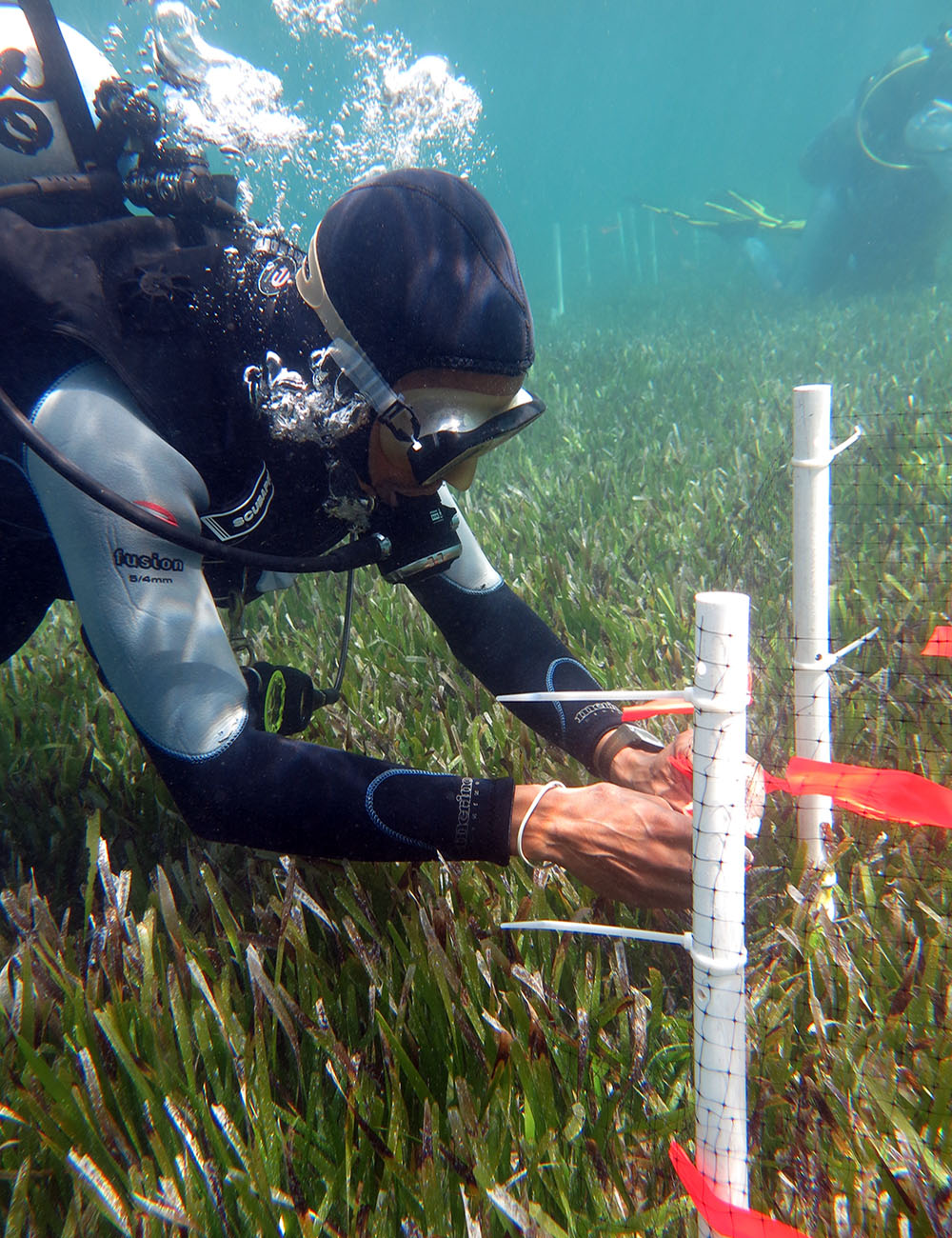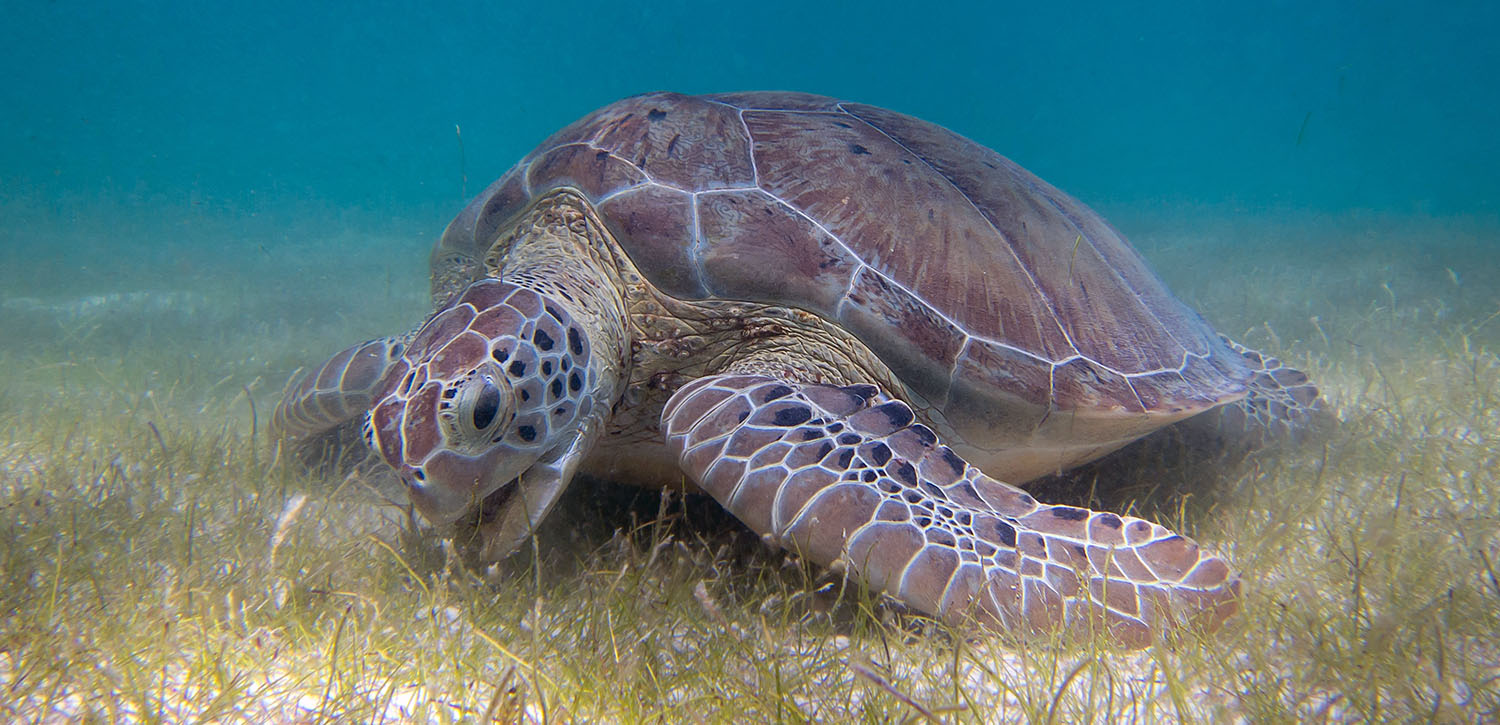Written By: Dyllan Furness, Science Communication Manager | The Florida Flood Hub
Tropical herbivores are on the move and that could spell trouble for subtropical seagrass meadows.
As the ocean warms, marine species often travel poleward in search of suitable habitats and food. This phenomenon, known as tropicalization, can expand the range of tropical herbivores such as sea turtles and manatees — which prefer warmer waters — to subtropical regions that have historically supported few marine herbivores.
A new study published this month in Nature Ecology & Evolution describes how subtropical seagrasses are at risk as tropical herbivores move in response to warming oceans.
“Ocean warming poses multiple threats to marine ecosystems,” said Tom Frazer, co-author of the study, and professor and dean of the USF College of Marine Science. “Seagrass meadows, which provide forage for herbivores and nursery habitat for many recreational and commercially important fishery species, are already threatened by degraded water quality. This study suggests that the tropicalization of marine ecosystems in response to warming temperatures could further contribute to the decline of these vital habitats.”
The study’s authors used turtlegrass, a foundational seagrass species found throughout the Western Atlantic, Caribbean Sea and Gulf of Mexico, as a model for seagrass meadows. Researchers conducted a series of coordinated experiments in seagrass beds spanning 23 degrees of latitude (including sites in Bonaire, Panama, Belize, Mexico, the Cayman Islands, and the United States) and found that turtlegrass populations at higher latitudes had lower productivity in response to simulated grazing than populations at lower latitudes.

Researchers behind the recent article conducted a series of coordinated experiments in seagrass beds spanning six countries and 23 degrees of latitude. Photo credit: Maggie Johnson
The findings suggest that subtropical seagrasses are less resilient to heavy grazing from marine herbivores, in part because they receive less sunlight relative to their tropical counterparts. As tropical herbivores move into subtropical waters, overgrazing may prevent subtropical seagrass meadows from persisting in these environments.
There’s hope, though, for subtropical seagrasses and the many species they sustain. What’s key, according to the study’s authors, is making sure seagrasses have what they need to thrive.
“If we want to give these meadows the best chance of enduring the anticipated increases in grazing, we need to get them as much light as possible,” said Justin Campbell, lead author and marine biologist at Florida International University. “That means protecting the water quality.”
While overgrazing is not yet a widespread occurrence across the Western Atlantic, it already occurs in subtropical to temperate waters around Australia and in the Mediterranean. This recent study can serve as a clarion call to protect subtropical seagrass meadows before grazing pressure from tropical herbivores increases.
“As tropical herbivores extend their ranges, they are likely to have profound effects on the ecology of seagrass ecosystems in the northern Gulf of Mexico,” said Frazer. “The results of this study indicate clearly that future management of marine ecosystems will need to place a higher priority on protections from pollutants and other stressors to give seagrasses the best chance to cope with warming waters and other climate related changes.”
